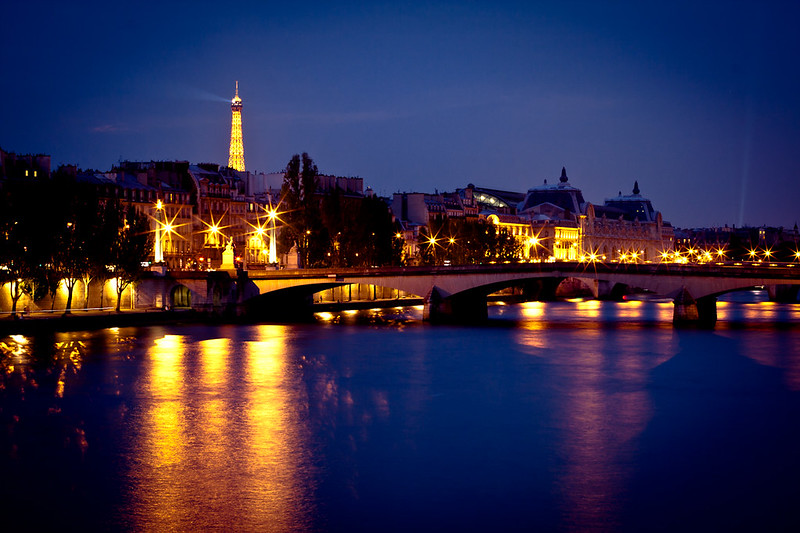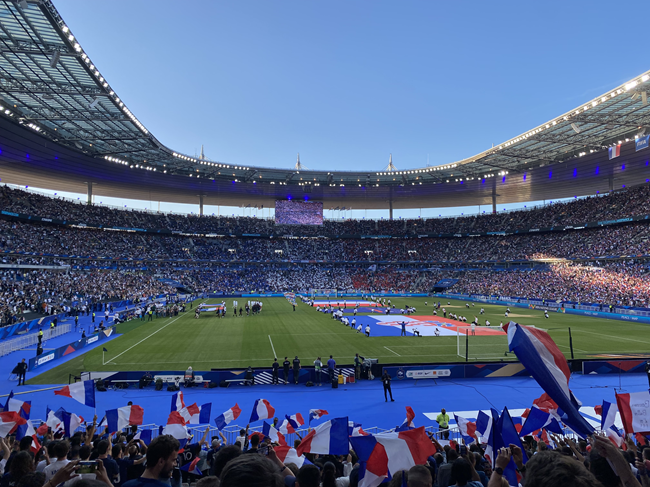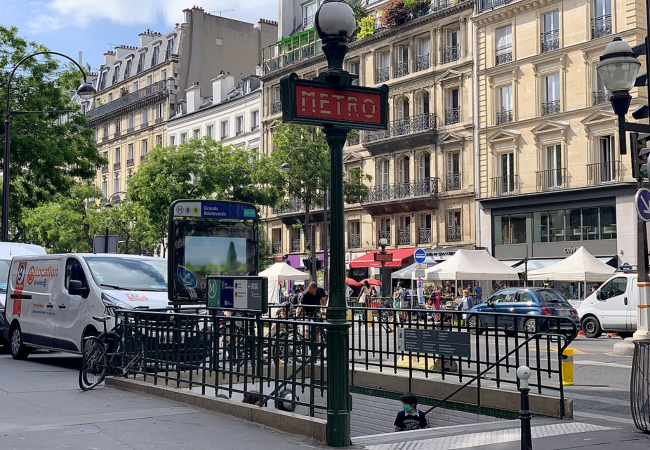Behind the Scenes of the 2024 Summer Olympics and Paralympics in Paris


With the 2024 Summer Olympics and Paralympics in Paris quickly approaching, the city has been working hard to get ready. From renovating sports venues and parks, to cleaning the Seine, to modernizing the Métro, it’s apparent that Paris is determined to set a precedent for future Olympic Games.
The Olympic torch was lit on April 16 in Olympia, Greece. On May 8, it will begin its journey throughout France, arriving by tall ship in Marseille. The Opening Ceremony on July 26 will be unlike any other, taking place on the Seine instead of in a traditional stadium. In addition, it will be open to everyone and will be free for people watching on the upper quays, as an invitation for all to join in the celebration.
According to paris.fr, the official site for the City of Paris, renovations and improvements in preparation for the Games have been part of a long-term effort that began in 2014. Even after the Olympics, these improvements will greatly benefit those who live in and visit Paris, with more green spaces, housing units, pedestrian- and bike-friendly areas, and updated public transportation.
In this article, we’ll take you behind the scenes of what the city is doing to prepare for the biggest event of the year.

La Seine. Photo credit: Rinat Abdullin/ Flickr
The Seine River Cleanup
A cleanup of the Seine was first proposed in the 1990s by then-mayor and future president Jacques Chirac, but the project never got off the ground. The river has been closed to swimmers for over a century. The current mayor of Paris, Anne Hidalgo, proposed a clean river for the Olympics that would not only be used for the competitions, but also later opened to the public. This 1.4 billion euro plan is ambitious, and involves a number of sanitation system upgrades.
The Seine will be used for three open-water swimming events during the Olympic and Paralympic events, including the triathlon and marathon swimming. In addition, the river will host the Opening Ceremony, when boats will carry the athletes down the river.
View this post on Instagram
Olympics Village at Seine-Saint-Denis
The Seine-Saint-Denis department is home to two areas built specifically for the Olympics. This “Olympics Village” will serve as the center for about 14,000 athletes and officials, offering lodging, practice equipment, and access to transportation.
The Olympics Village will also include competition sites, training areas, and a celebration site. Because France is striving to host a sustainable Games, they are promoting the use of solar panels for the Village and are planning to make it a pedestrian- and bike-friendly area. After the Games, the Olympics Village will be turned into affordable housing, including 2200 family housing units, 900 student housing units, and multiple entertainment and recreation areas.
In addition, a neighborhood dedicated to the media at the Parc des Expositions in Le Bourget has been built to accommodate the nearly 25,000 journalists who will arrive for the Games. After the Games, this neighborhood will be used for the public, comprised of 1,300 housing units (20% of which will become social housing), several shopping and service areas, and recreational activities.

Village olympique de Saint-Denis. © Edoirefaitdel’art/Wikimedia Commons
Sustainability
For the health of both visitors and the planet, France has been working hard to create a durable and ecological Olympics Village that will serve the community once the Games are over. In particular, there will be a focus on sustainable mobility, energy, water management, and respecting biodiversity. As the biggest global event of the year, the Olympics serve as an opportunity for the city of Paris to show their commitment to sustainability. While some environmental organizations are skeptical about Paris’s ability to meet its goals, the city plans to use the Olympics to put eco-responsibility at the forefront and to encourage participants, habitants, and the world to participate in sustainability.
In order to achieve this goal, the city aims to cut in half the carbon footprint. Renewable energy will be prioritized, and athletes and visitors will be offered a partially vegetarian menu at the Olympics Village and venues. All competition sites will be accessible by foot, bike, and public transportation, and the Parc George-Valbon will be expanded to include more green space once the Games are finished. This space will become a new, biodiverse area, expanded by 13 hectares.

Parc George-Valbon. Photo credit: Arthur Weidmann / Wikimedia commons
Building & Repurposing Sports Venues
Keeping in mind Paris’s focus on sustainability and creating eco-friendly spaces, 95% of sports venues have been repurposed for the Olympics, with few new venues being built. Sites that are being repurposed include the Stade de France and several gyms and sports complexes. Larger sites, such as the Olympics Village and Aquatic Center, are in the middle of construction and will be used for the public after the Games, providing more housing, recreation centers, and Olympic-sized sports complexes for all to enjoy.
In addition, the city is building temporary viewing sites for those who are able to watch the competitions live. While the Stade de France and Aquatic Center will have over 86,000 seats combined, smaller, temporary viewing locations will be scattered in and around Paris. One example is the Stade Tour Eiffel on the Champ de Mars, where viewers can watch the beach volleyball and blind football competitions. The Champ de Mars Arena, currently known as the “Grand Palais Ephémère,” will be repurposed to host the competitions of judo, wrestling, para judo, and wheelchair rugby. Other competition sites in the heart of Paris include the Pont d’Iéna, Pont Alexandre III, Esplanade des Invalides, and Place de la Concorde.

Stade de France. Photo credit: Zakarie Faibis/Wikimedia Commons
Expected Closures
For security and construction reasons, some areas of Paris will be closed to the general public and/or motorists starting in April. Starting early will hopefully allow people living in the city to get used to the closures and to find alternate means of travel. To ensure the safety of everyone during the Games, and to help make the summer flow smoothly, the city of Paris has encouraged Parisians to work from home when possible, plan traffic routes in advance, and prioritize walking or biking over taking a vehicle.
While the Parisian public transportation system is organized and reliable, many delays, crowds, and closures are expected during the Games. Bus routes will change, especially around each competition site, and the Métro stations Concorde (lines 1, 8, 12), Tuileries (line 1), and Champs-Élysées Clémenceau (lines 1, 13) will be closed during specific dates due to competitions. In addition, many roads will be closed to vehicular traffic. Plan ahead to see if there are alternate routes, and keep in mind that other Métro stations may be closed throughout the Games or the Opening Ceremony for safety reasons.
For more information about closures, delays, and the Olympic and Paralympic Games, check out paris.fr/jeux-2024.

The entry to the Métro station of Grands Boulevards on Boulevard Montmartre. Photo credit: Paris II by Chabe01/ Wikipedia Commons
Lead photo credit : © nicolas michaud/Flickr
More in 2024 Olympics, Olympics, Paris Olympics, sport


